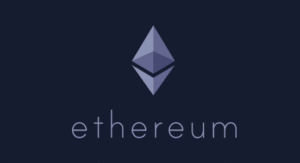$ETH
#Ethereum #VitalikButerin #Blockchain #Cryptocurrency #RISCV #TechInnovation #CryptoNews #Decentralization #SmartContracts #ZKProofs #CryptoDevelopment #Scalability
Vitalik Buterin, the influential co-founder of Ethereum, has once again captured the spotlight with a groundbreaking proposal that could significantly alter the trajectory of the Ethereum blockchain. Buterin’s latest vision involves the adoption of RISC-V, an open standard instruction set architecture (ISA) that promises to simplify and accelerate Ethereum’s execution layer. This proposal is not merely a technical update; it’s a strategic maneuver that could dramatically reduce the costs associated with zero-knowledge (ZK) proofs, a crucial technology for enhancing privacy and scalability on the blockchain. Furthermore, it aims to achieve these improvements without disrupting the established development workflows that countless Ethereum developers rely on.
Buterin’s approach underscores a deeper commitment to making Ethereum more modular and scalable. With blockchain technology increasingly becoming a cornerstone of digital innovation, the pressure is mounting on leading platforms like Ethereum to offer solutions that are not only robust and secure but also efficient and user-friendly. The adoption of RISC-V architecture could mark a significant milestone in this journey, offering a more streamlined and cost-effective framework for executing smart contracts and processing transactions. This transition to a simpler, yet more powerful execution layer could open new avenues for developers, enabling them to build more sophisticated and responsive decentralized applications (dApps).
The rationale behind targeting ZK proof costs within Ethereum’s ecosystem is particularly noteworthy. ZK proofs are a pivotal element in the quest for a more scalable and private blockchain, allowing for the verification of transactions without disclosing details that could compromise user privacy. However, the computational intensity and resulting cost of generating these proofs have been a persistent challenge. By potentially lowering these barriers through a more efficient execution layer, Ethereum could substantially widen its appeal and usability, making decentralized technologies accessible to a broader audience. This move aligns with Ethereum’s long-term vision of a more decentralized and inclusive digital economy.
Buterin’s proposal is part of a larger conversation about the future of blockchain technology and its capacity to support a decentralized world. The shift towards a modular architecture, with components like execution layers being optimized for performance and cost, represents a critical step towards realizing this vision. Ethereum’s ability to adapt and evolve in response to the changing needs of its developers and users will be crucial in maintaining its position as a leader in the blockchain space. As the community and industry stakeholders reflect on Buterin’s “radical” vision, the anticipation builds for a simpler, faster Ethereum that could redefine the boundaries of blockchain technology.






Comments are closed.